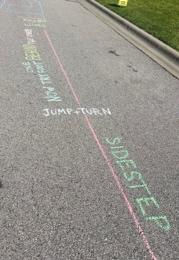Toe-Walking: Not Just "What Kids Do"
- All Care Therapies

- Oct 8, 2020
- 2 min read

As children transition from what can best be described as “waddling” into a more stable and consistent pattern of walking, it is not uncommon to see them walking up on their toes as they become more accustomed to safely navigating their environment, and yes, it can be super cute to watch. However, it is not considered “normal” for children over 3 years old to walk without their heels touching the ground and it is a condition that affects up to 24% of children.1
Why do kids walk on their toes? A variety of factors may contribute to why a child doesn’t walk with a heel<>toe gait pattern:
· Sensory: Some children, particularly those on the Autism spectrum, don’t like the way their feet feel when they touch certain surfaces, so they try to maintain as little contact as possible with the ground when walking.2
· Balance: If a child is feeling unsteady or their vestibular system isn’t processing input from their surroundings correctly, they may utilize toe-walking as a way to make themselves feel more stable with movement.2
· Pain: Musculoskeletal impairments such as muscle/tendon shortening or weakness and joint misalignment may be contributing to pain or discomfort when a child uses their entire foot to ambulate, so they compensate to avoid the painful positions.
How can a Physical Therapist help?
By addressing all aspects that could be contributing to why a child is walking on their toes, a Physical Therapist is able to encourage correct alignment of the joints in the feet and ankles, strengthen weak musculature, decrease adverse reactions to sensory input, and improve balance in order to decrease the amount of time spent in a tip-toe position.3
When should a kiddo start seeing a PT for toe walking?
The longer a child spends in a compromised position, the more likely it is that the muscles and joints, as well as other related systems, will develop in an abnormal manner, making it harder to correct down the line. Heel cord (Achilles) shortening, decreased bone density, hip displacement, and visual deficits are some of the consequence of not addressing toe-walking early on, so the sooner a kiddo is seen by a Physical Therapist, the better!
References:
1) Engelbert R, Gorter JW, Uiterwaal C. Idiopathic toe-walking in children, adolescents and young adults: a matter of local or generalised stiffness?. BMC Musculoskelet Disord. 2011: (12)61. https://doi.org/10.1186/1471-2474-12-61.
2) Chue V, Anderson L. Sensory-processing differences in children with idiopathic toe walking (ITW). Am J Occup Therp. 2020: 74(Sup1). doi:10.5014/ajot.2020.74S1-PO3205
3) Sinclair MR, Lind AA, Knowlton JQ. The effect of persistent toe walking on the skeletal development of the pediatric foot and ankle. J Pediatric Orthop B. 2018: (27)1:77-81. doi: 10.1097/BPB.0000000000000461




Comments